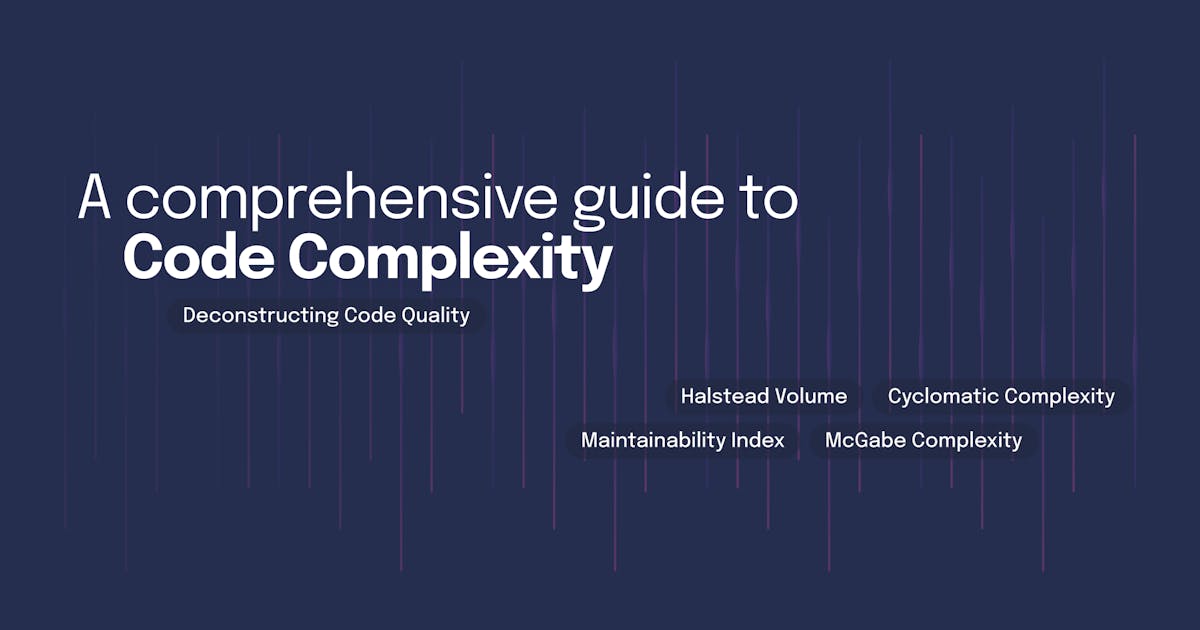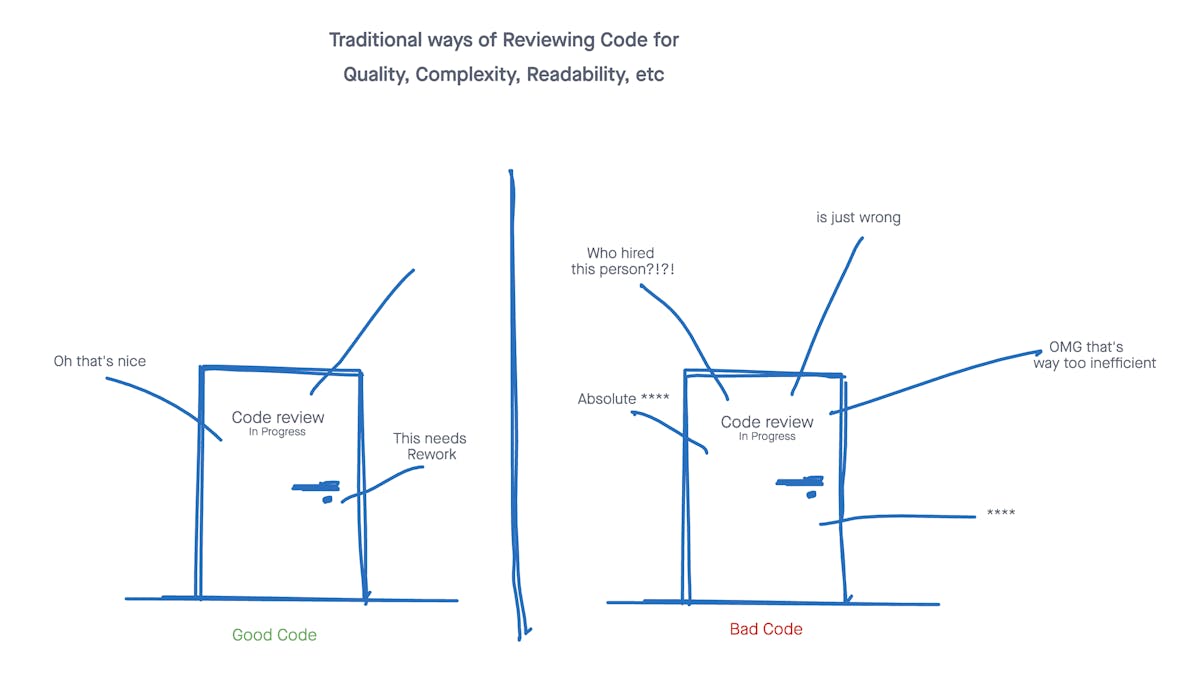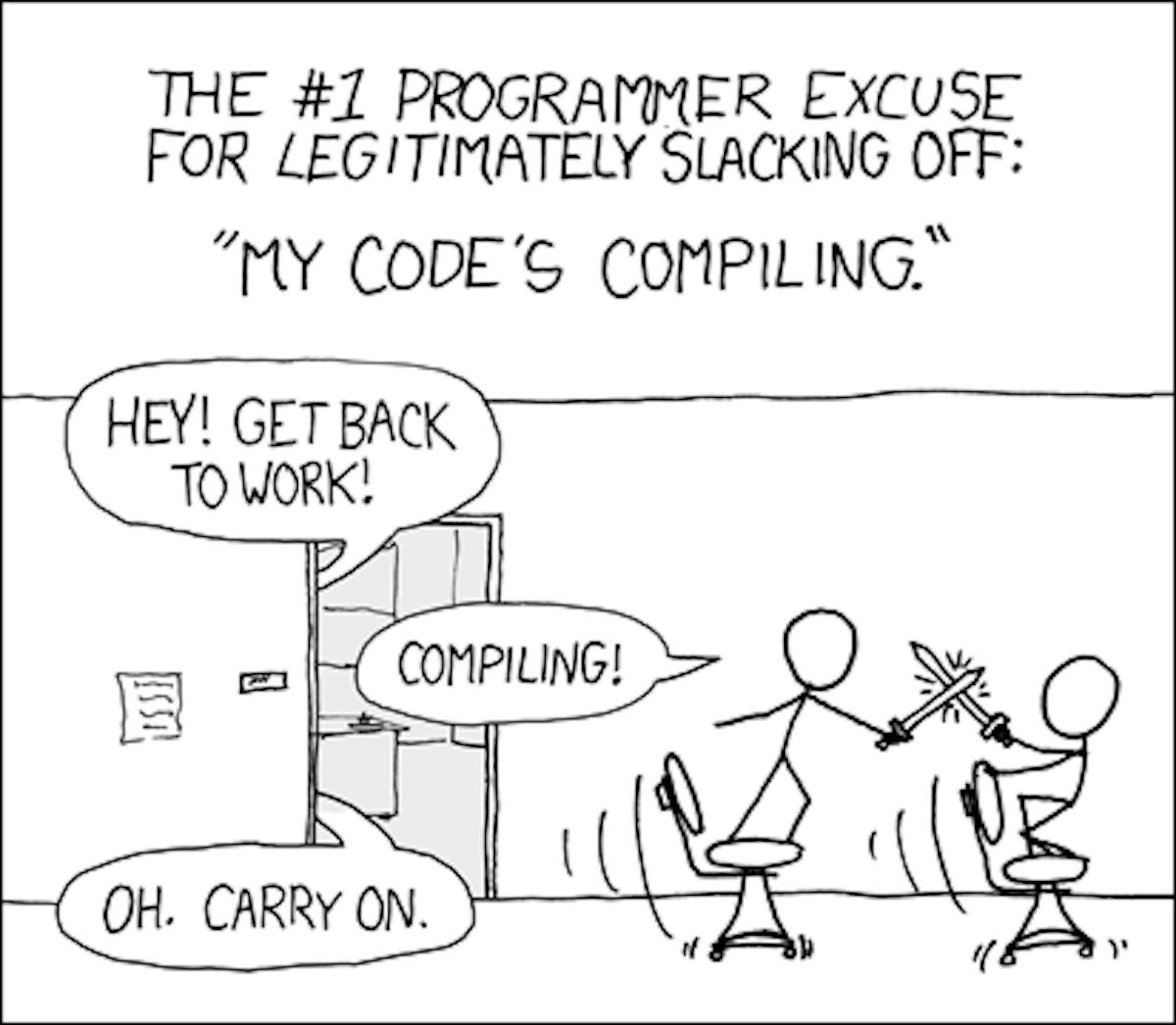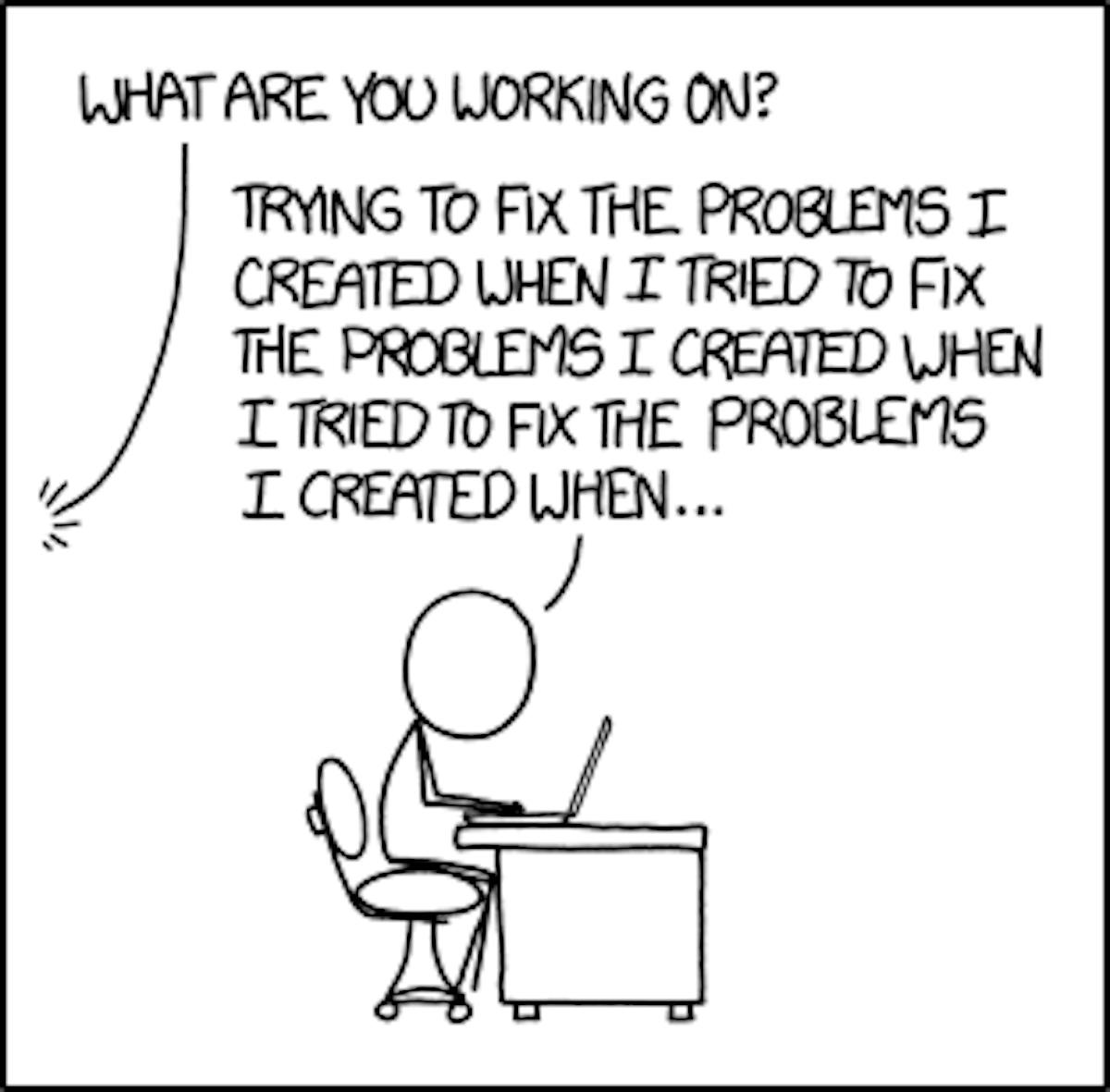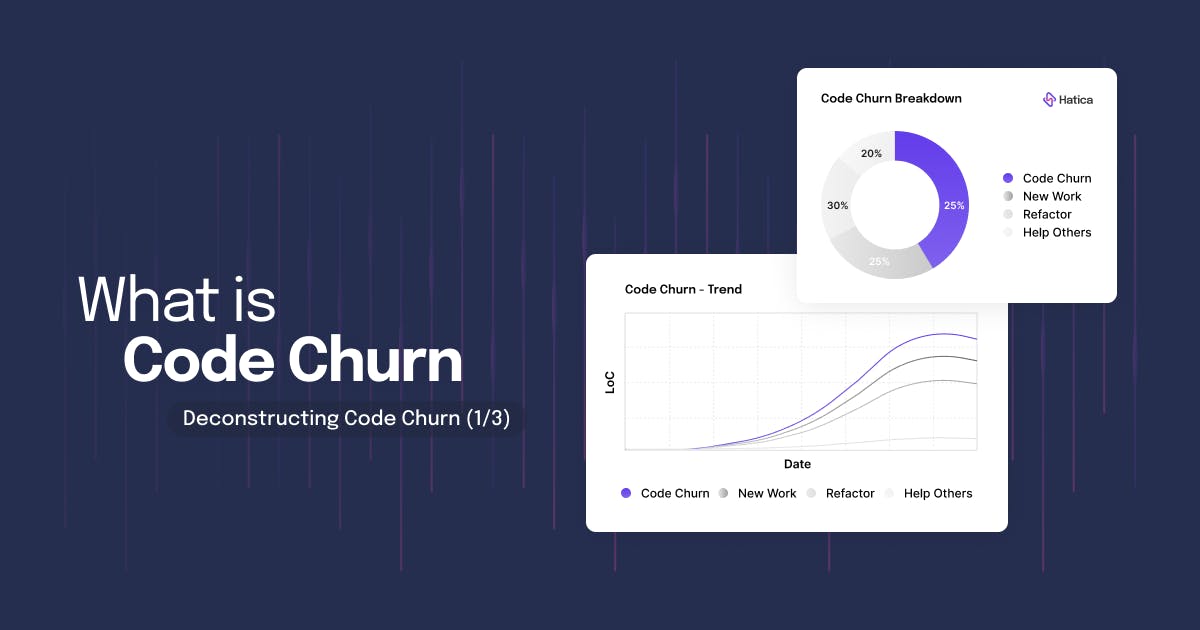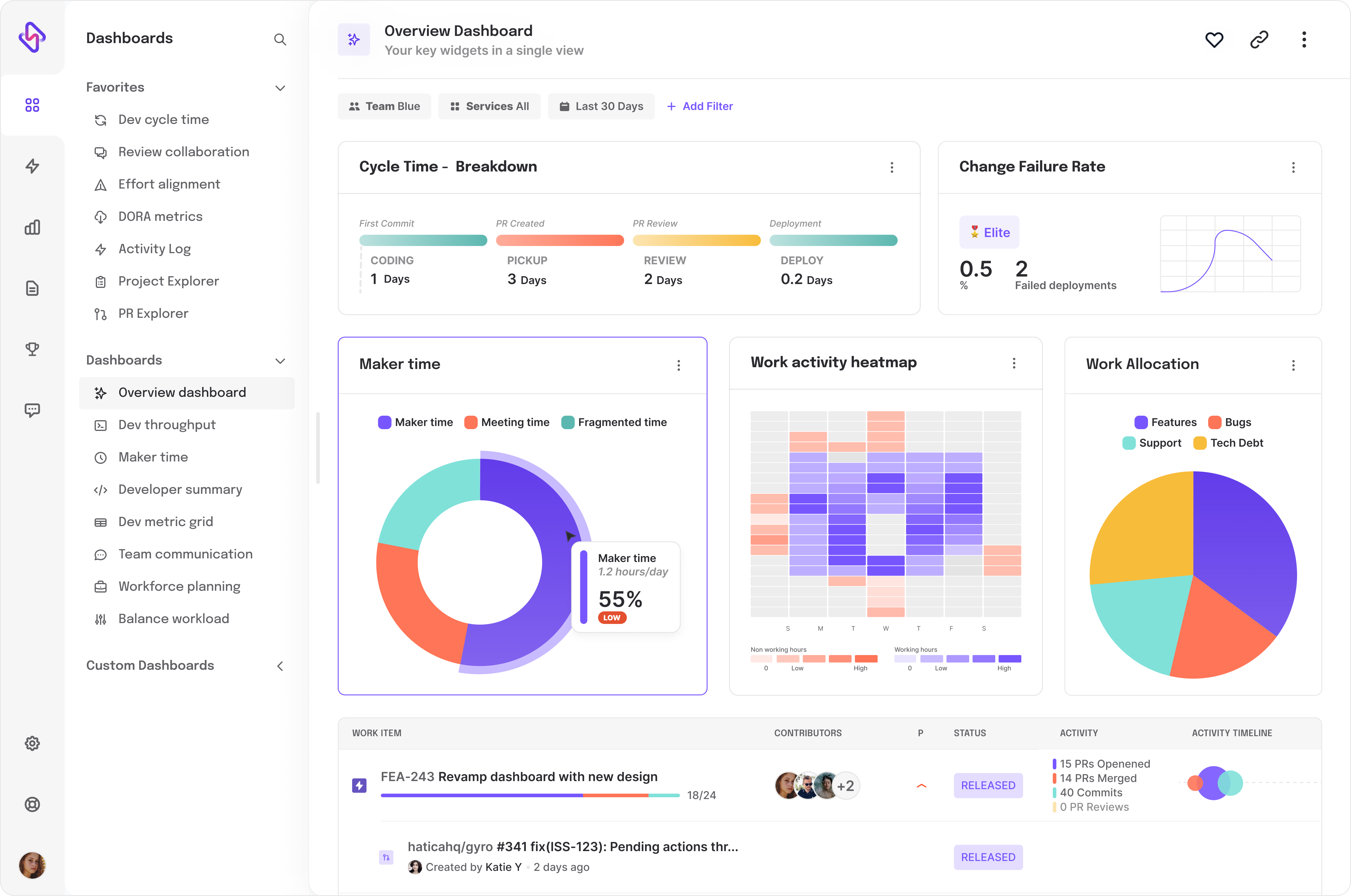2. Halstead volume
Halstead volume is part of a set of software metrics introduced by Maurice Howard Halstead in 1977. Similar to other Halstead complexity measures, Halstead volume takes into account the number of operators and operands and aims to describe the size of the implementation of the module or the algorithm. It is represented by the following formula:
V = N * log2(n)
Where,
V = Halstead volume,
N = Program length,
And n = Program Vocabulary.
While,
Program Length = N = N1 + N2 = total number of operators + total number of operands
Program vocabulary = n = n1 + n2 = number of operators + number of operands
3. Maintainability Index
The Maintainability Index or MI is a score of how easy it is to maintain code. It is a combination of the four metrics: Cyclomatic complexity and Halstead volume, Lines of Code (LoC) and depth of inheritance. This is considered to be a metric that helps give an overall picture of complexity as it weighs Halstead volume and cyclomatic complexity against LoC and depth of inheritance. The traditional formula is defined as follows:
Maintainability Index = 171 - 5.2 * ln(Halstead Volume) - 0.23 * (Cyclomatic Complexity) - 16.2 * ln(Lines of Code)
Since the above formula results in a range of [-∞, 171], a slightly modified formula is used to bind the range of MI to [0, 100]:
Maintainability Index = MAX(0,(171 - 5.2 * ln(Halstead Volume) - 0.23 * (Cyclomatic Complexity) - 16.2 * ln(Lines of Code))*100 / 171)
Ideally, an MI of less than 10 is considered good, while 10 to 19 is acceptable, and scores >20 are considered high priority for rework.
4. Cognitive Complexity
Cognitive Complexity is a way to measure how hard it is for someone to understand and work with a piece of code. It looks at things like how the code is organized and if there are complicated parts like nested loops or if statements.
The goal is to make the code easier to understand and work with by keeping things simple and organized. By reducing cognitive complexity, it becomes easier for developers to read and change the code, which leads to better-quality software.
5. Rework Ratio
As we know, code complexity is commonly measured using various metrics, one of which is the rework ratio. The rework ratio quantifies the amount of code that needs to be modified or rewritten after an initial implementation. It indicates the level of complexity and the potential for defects in the codebase.
To calculate the rework ratio, the number of code changes required in subsequent iterations or bug fixes is divided by the total lines of code.
For example, if the total time spent on rework is 100 hours and the total development time is 500 hours, the rework ratio would be (100 / 500) x 100 = 20%.
This metric provides insight into the maintainability and stability of the software.
Note that a high rework ratio suggests that the codebase is complex and prone to errors, requiring significant effort to fix or enhance. It highlights the need for better design and refactoring to improve code quality and reduce future rework.
6. Lines of Source Code or Lines of Executable Code
Code complexity is typically measured using various metrics, and neither "Lines of Source Code" or "Lines of Executable Code" alone provide a comprehensive measure of complexity. Instead, a combination of different metrics is used to evaluate complexity accurately. These metrics include cyclomatic complexity, which quantifies the number of possible execution paths; Halstead complexity measures, which consider the number of operators and operands; and maintainability index, which incorporates factors like code size, complexity, and coupling.
Furthermore, other metrics like nesting depth, coupling between objects or modules, and code duplication can also be considered.
Analyzing different metrics, developers may better comprehend the codebase's complexity and make informed decisions about its readability, maintainability, and mistake likelihood.
7. Coupling/Depth of Inheritance
Coupling refers to the interdependence between different modules or components in a codebase. It measures how closely one module is connected to another. High coupling indicates strong dependencies and makes the code more difficult to maintain and modify.
Instead, depth of inheritance measures the class hierarchy's levels. It represents the level of complexity in the inheritance structure. Deep inheritance hierarchies can lead to code that is harder to understand, test, and maintain.
These metrics are important because they provide insights into the complexity and maintainability of the code. Lower coupling and shallower inheritance hierarchies are desirable as they promote code reusability, modularity, and easier maintenance.
Let us talk about the benefits of measuring the code complexity.
Benefits of Measuring Code Complexity
Measuring code complexity is an important aspect of software development that offers several benefits. Here are some key benefits of measuring code complexity:
- Better Code Quality: Measuring code complexity allows developers to identify potential problems early in development. This, in turn, helps to improve code quality by ensuring that issues are addressed before the code is deployed in production. Code complexity metrics can also be used to set targets for code quality, which can help developers focus on writing cleaner, more maintainable code.
- Improved Maintainability: Code complexity directly relates to the ease with which code can be maintained and updated. By measuring code complexity, developers can identify areas of the code that are difficult to maintain and improve. This can help reduce the cost of maintaining the code over time.
- Reduced Bugs: Complex code is more prone to errors and bugs. By measuring code complexity, developers can identify areas of the code that are likely to cause problems and focus their testing efforts accordingly. This can reduce the number of bugs and improve the overall reliability of the code.
- Faster Development: Measuring code complexity can also help to speed up development. By identifying areas of the code that are particularly complex, developers can focus on simplifying these areas, which can reduce the amount of time required to write, test and deploy the code.
- Improved Collaboration: Code complexity metrics can identify areas of the code that are particularly complex and require additional expertise. This can help improve collaboration between team members, as developers with specific skills can be brought in to help with particularly complex code areas.
- Better Code Documentation: By measuring code complexity, developers can identify areas of the code that are particularly complex and require additional documentation. This can help ensure the code is well-documented and easier to understand for other developers needing to work with it in the future.
Measuring code complexity is an important part of software development that can help to improve code quality, reduce bugs, improve maintainability, speed up development, and improve collaboration between team members.
What to do about Code Complexity?
Code complexity is an indicator of code quality and its ease of maintenance. Complexity directly impacts delivery times and the quality of products shipped by a team. Since products are usually maintained over a long time period, teams should strive to optimize complexity in order to allow long-term ease of use, readability, and maintenance of code.
Optimizing for complexity involves a careful study of the current patterns and setting of baselines and acceptable standards based on the observed patterns and industry standards. Metrics such as cycle time, throughput, review practice, focus time, communication patterns, etc., help engineering leaders measure and optimize code quality.
Simplify Your Code Complexity with Hatica
Hatica equips engineering leaders with granular visibility into dev team productivity alongside 60-plus other metrics enabling them to reduce bottlenecks to accelerated delivery and achieve a better developer experience. Learn how Hatica can help you build better engineering teams.
Request a demo →


